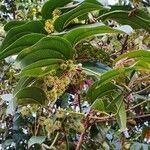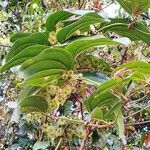| Therapeutic use
|
Antirheumatic agents (root), Aphrodisiacs (root), Demulcents (root), Hypohidrosis (root), General tonic for rejuvenation (root), Skin diseases (root), Syphilis (root), Sexually transmitted diseases (tuber), Skin diseases (tuber), Alterative (unspecified), Aphrodisiac (unspecified), Arthritis (unspecified), Asthma (unspecified), Boil (unspecified), Cancer (unspecified), Carminative (unspecified), Debility (unspecified), Demulcent (unspecified), Depurative (unspecified), Dermatosis (unspecified), Diaphoretic (unspecified), Diarrhea (unspecified), Diuretic (unspecified), Enteritis (unspecified), Flux (unspecified), Gonorrhea (unspecified), Gout (unspecified), Gravel (unspecified), Menorrhagia (unspecified), Parturition (unspecified), Refrigerant (unspecified), Rheumatism (unspecified), Skin (unspecified), Stimulant (unspecified), Sudorific (unspecified), Syphilis (unspecified), Tonic (unspecified), Tumor (unspecified), Urogenital (unspecified), Venereal (unspecified), Abscess (unspecified), Alexiteric (unspecified), Antidote (unspecified), Cancer(Digestive) (unspecified), Cold (unspecified), Malaria (unspecified), Analgesics (unspecified), Antipyretics (unspecified), Aphrodisiacs (unspecified), Asthenia (unspecified), Colic (unspecified), Diuretics (unspecified), Dyspepsia (unspecified), Disorder of ejaculation (unspecified), Epilepsy (unspecified), Fever (unspecified), Flatulence (unspecified), Helminthiasis (unspecified), Inflammation (unspecified), Laxatives (unspecified), Leprosy (unspecified), Neuralgia (unspecified), Psoriasis (unspecified), Skin diseases (unspecified), Urination disorders (unspecified)
|





